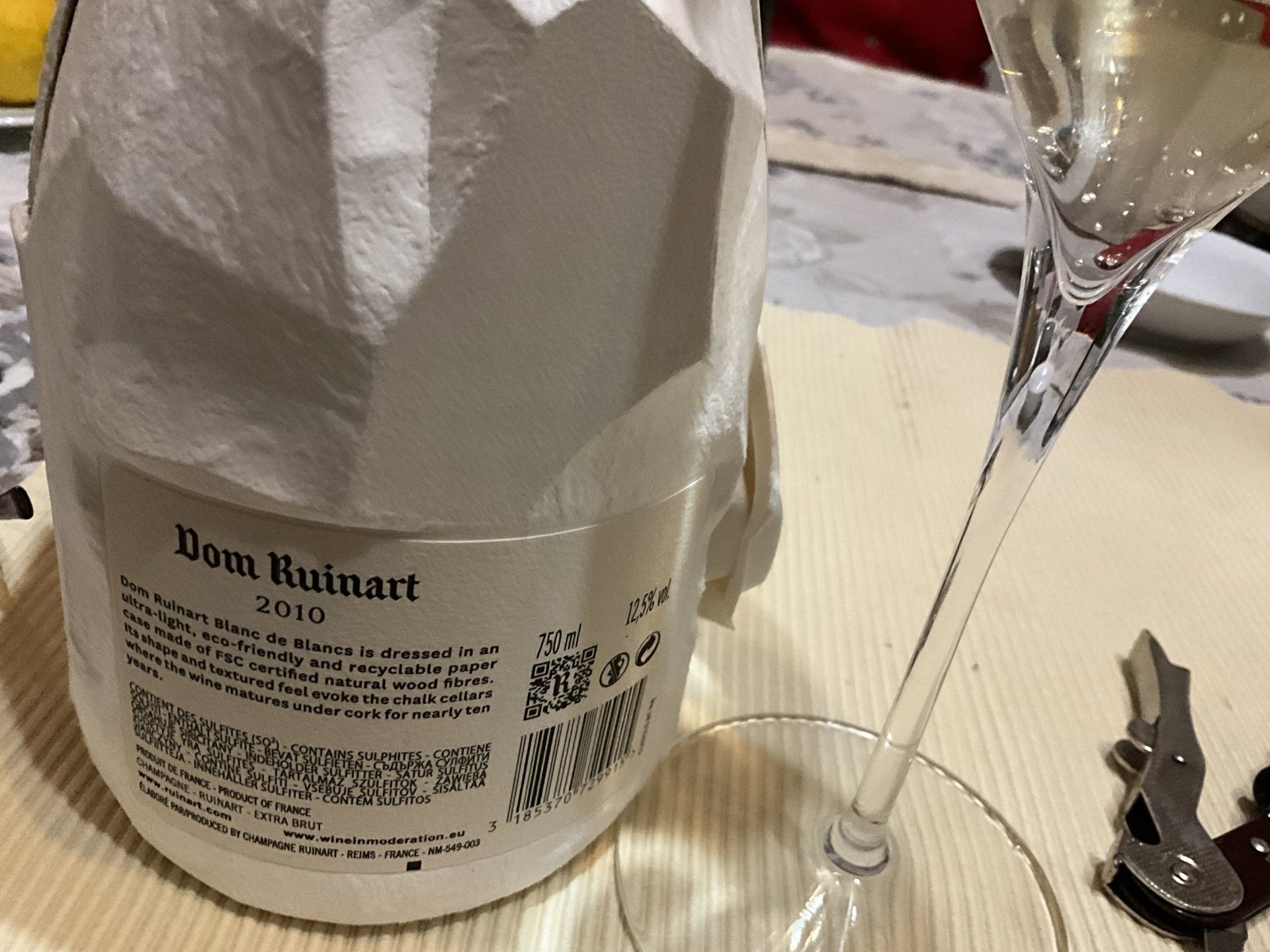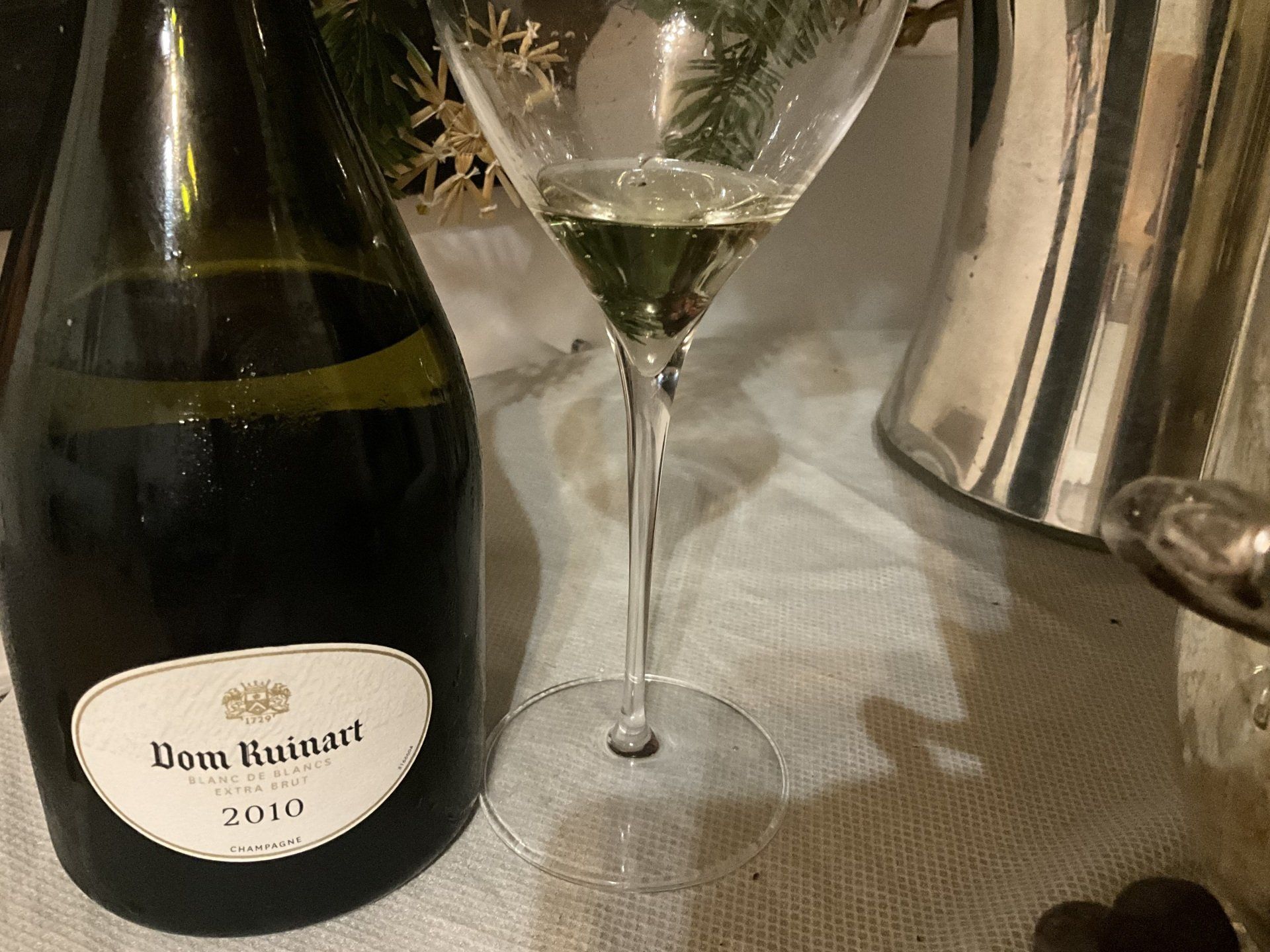Dom Ruinart Blanc de Blancs 2010 Extra Brut
A New Lesson in Creaminess
A subtle casual color comes to us in the glass, then something fills the nose. Smoked apricots? Another female taster smells citrus. The cultivated drinkers agree on one thing: this wine needs time and air. A lot of time, in fact. In the glass, with the bottle open.
I remember a tasting of various vintages of Dom Ruinart, it must have been in 2000, with the then cellar master Jean-François Barot. He explained to me the conception of this extraordinary wine, while five well-filled glasses were waiting for me on the table.
Barot spoke at that time that he had made various experiments with closures on the bottles for the second fermentation. These were the first experiments with corks for the aging of Dom Ruinart Blanc de Blancs.
Always his goal, said Barot at the time, was to compose an elegant Blanc de Blancs, a cuvée that expresses the aromatic freshness of the Chardonnay grape, but at the same time shines with depth, richness and complexity, and a taut finish.
To preserve this distinctive signature of Dom Ruinart, this cuvée is 90 percent blended from the famous crus Mesnil-sur-Oger, Avize, Chouilly and Cramant, and completed with a vibrant touch of Sillery from the northern slopes of the Reimes Mountains.
We then talked about the New York Marathon and how Jean-François Barot never drank wine four weeks before the start. After an hour of conversation, the tasting followed.
"No citrus, but pink grapefruit“, analyzed one taster after fifteen minutes, while another, the female taster, discerned pear and a Burgundian creaminess. A twist on this Dom Ruinart 2010: generally, bottles are capped with a crown cap for the second fermentation in Champagne. Dom Ruinart 2010 marks a step back to a historically common practice: the cork closure for aging on the lees.
The bottles are closed with natural cork instead of crown cork. The porosity of the cork allows the wine to develop more complexity over a long period. Burgundy Creaminess.
Says Ruinart's Chef de Caves Frédéric Panaïotis, "Tastings in 2008 revealed a marked difference: the bottles with cork revealed a firmer wine with added complexity. Although cork is porous, it remains extremely stable over a long period of time. The metal corks, on the other hand, constantly allow small amounts of oxygen to enter the bottle."
Three days later: a tasting back from the opened bottle confirms the initial assessment. Dom Ruinart Blanc de Blancs 2010 Extra Brut is a firm wine of subtle complexity that needs its time. In the chalk cellar and in the glass.






